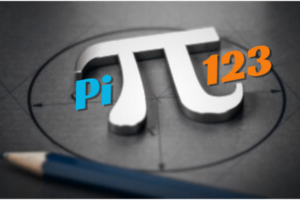Understanding pi123
Pi123 is a contemporary system designed to address specific challenges within its field while leveraging modern technological advancements. Its origins can be traced back to the need for enhanced precision and efficiency in data processing and management. Initially developed as a response to the limitations of existing frameworks, pi123 incorporates several innovative principles that set it apart from traditional models. The foundational concept of pi123 revolves around the integration of various components, which collectively function to optimize performance and improve user experience.
At its core, pi123 consists of three primary components: the data processing unit, the user interface module, and the analytical framework. The data processing unit is responsible for handling extensive datasets, ensuring rapid processing and efficient storage. The user interface module allows for seamless interaction between users and the system, designed for accessibility and ease of use. Meanwhile, the analytical framework employs advanced algorithms to generate insights and forecasts based on the processed data, significantly enhancing decision-making capabilities.
Despite its advanced features, there are common misconceptions surrounding pi123. Some may perceive it as overly complex or assume it is suitable only for large organizations. In reality, pi123 is designed to cater to a diverse range of users, including small and medium enterprises. Its flexible architecture allows for customization, making it adaptable to various operational needs. Understanding pi123 and its functionalities is crucial, as it plays a significant role in streamlining processes and enabling organizations to leverage data effectively.
In summary, pi123 represents a critical innovation in its respective field, embodying principles that prioritize efficiency and user-friendliness. Its contributions extend beyond mere technical specifications, illustrating the importance of integrating automated systems in today’s data-driven landscape.
The Applications of pi123
pi123 has emerged as a versatile tool, finding applications across diverse industries due to its innovative capabilities. In the realm of healthcare, for example, pi123 is employed in data management systems that enhance patient care through improved accuracy and real-time data processing. By integrating pi123 into existing frameworks, healthcare providers have reported enhanced efficiency in record-keeping and significant reductions in administrative errors. Such improvements highlight how pi123 offers a transformative approach compared to traditional methods, facilitating better patient outcomes.
In the manufacturing sector, pi123 is being utilized for streamlining production processes. Companies are leveraging pi123 to monitor equipment health and manage supply chains more effectively. For instance, a leading automotive manufacturer adopted pi123 to predict machinery failures before they occur, enabling preemptive maintenance that has resulted in reduced downtime and substantial cost savings. This case exemplifies pi123’s ability to revolutionize operational practices by fostering a more proactive approach compared to legacy systems.
The financial industry has also recognized the advantages offered by pi123, especially in risk assessment and compliance management. Financial institutions use pi123 for algorithm-driven analytics that ensure adherence to regulatory requirements while minimizing the risk of errors. By employing pi123, these institutions can efficiently analyze vast datasets, leading to timely, informed decision-making, which traditional methods struggle to achieve.
Through these applications, it is clear that pi123 does not merely serve as a replacement for existing technologies but rather enhances them. As businesses continue to embrace this tool, it holds the potential to significantly alter workflows, drive efficiency, and ultimately pave the way for advancements across multiple sectors. The adaptability of pi123 serves as a crucial asset, positioning it as a vital component in the continual evolution of industry practices.

How to Implement pi123 in Your Projects
Implementing pi123 in your projects requires a structured approach to ensure its successful integration. To begin, it is essential to identify the specific needs of your project and how pi123 can address those requirements. Start by outlining the objectives of incorporating pi123, ensuring that you define clear goals. This sets a focused foundation for the subsequent steps.
Next, gather the necessary tools and resources to work with pi123 effectively. Familiarize yourself with the programming languages and frameworks that support pi123 functionality. A good starting point might include development environments, libraries, and APIs that interact seamlessly with pi123. It may also be beneficial to establish a version control system to manage your project code, allowing for collaborative development and review.
Once your environment is set up, begin with incremental implementation. Break down your project into manageable components, integrating pi123 in small, controlled sections. Testing each component as you integrate pi123 can help identify issues early in the process. Units tests and integration tests are critical at this stage to ensure that each part functions as intended without disrupting overall functionality.
While implementing pi123, be aware of potential challenges. Common issues include compatibility with existing code, the learning curve associated with new tools, and performance considerations. To mitigate these challenges, regularly consult documentation and community forums to seek guidance. Real-world examples and case studies can also provide insights into effective strategies.
Finally, gather feedback from users and stakeholders once pi123 is integrated into your project. An ongoing evaluation process will help fine-tune its application and reveal areas for improvement. By following these steps, you will empower yourself to harness the capabilities of pi123 effectively, ensuring a robust and successful integration in your projects.
Future Trends and Developments Surrounding pi123
The future landscape of pi123 is poised for significant transformation, driven by emerging trends and innovative advancements across various sectors. As the digital ecosystem evolves, pi123 is expected to integrate more seamlessly with cutting-edge technologies such as artificial intelligence, blockchain, and Internet of Things (IoT). This integration will facilitate enhanced functionality and user engagement, positioning pi123 at the forefront of digital solutions.
Furthermore, the increasing emphasis on data security and privacy is likely to impact the progression of pi123. As users become more discerning about their digital engagements, developers must prioritize robust security measures. This shift may lead to the incorporation of advanced encryption methods and privacy-centric features, reinforcing user trust and promoting wider adoption of pi123.
Expert opinions indicate that we can anticipate a surge in collaborative platforms leveraging pi123. These platforms are expected to harness the connectivity offered by pi123 to foster community-driven projects and initiatives. This trend may result in a more democratized approach to technology, enabling users to co-create and contribute to the pi123 ecosystem.
Moreover, ongoing research into user experience and interface design is likely to yield significant enhancements to pi123. By focusing on intuitive navigation and accessibility, developers can cater to a broader audience, including those who may be less tech-savvy. This focus on usability could set the stage for accelerated mainstream adoption of pi123.
As we look towards the future, the landscape of pi123 will undoubtedly continue to evolve. With the convergence of innovative technologies and an increasing focus on user-centric design, pi123 is well-positioned to play a pivotal role in shaping the future of digital interaction. By staying attuned to these trends, stakeholders can better navigate the exciting developments on the horizon.
